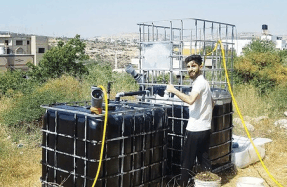
Starting seeds at home enables gardeners to cultivate strong plants that are ready for the ground come springtime, while also bringing the joy of gardening indoors during the more dormant time of year. Luckily, you don’t need to spend much money on seed-starting kits and supplies. With just a few containers, homemade seed-starting mix, and some paper, you can grow excellent transplants for your garden.
Start the Seeds
Begin growing your seedlings in a controlled environment using a sterile medium. You can do this in a variety of ways. Peat pellets—compressed, dried circles of peat—have been prevalent in the gardening market for a while. Though inexpensive and simple to use, they also pose environmental issues. If you want an alternative kind of pellet, consider ones made from coconut coir. To forgo pellets altogether, create compost, sterilize it, add it to a seed-starting mix, and then use soil blockers to make a molded mound of soil to germinate seeds.
It’s possible to omit this step and plant directly into 3-inch pots with good results. Generally, bigger seeds are easier to start directly in pots, as they germinate quickly, while smaller seeds could be washed away and sit at the surface, which




